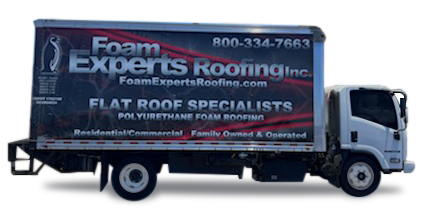Ever thought about how long a commercial roof lasts? It’s surprising to find out it can vary a lot. The type of materials and how well it’s installed play big roles. For example, a TPO roof can last 22 to 30 years, while metal roofs can go up to 45 years or more.
Knowing how long a commercial roof lasts is key for property owners. It helps ensure your roof lasts a long time and works well.
The lifespan of a commercial roof affects how often you need to maintain it and the costs over time. A green roof can last up to 50 years, offering both durability and benefits to the environment. On the other hand, PVC and asphalt roofs need regular checks and quick fixes to last longer.
Understanding these differences helps you choose the right roof for your needs and location. This is important for making your roof last as long as possible.
In this article, we’ll look at what affects a commercial roof’s lifespan. We’ll also explore different types of roofs and give tips for maintaining yours. Keep reading to learn how to make your commercial roof last a long time!
Factors Affecting the Lifespan of a Commercial Roof
Many factors can affect how long a commercial roof lasts. The quality of materials and the installation are key. Using top-notch materials like EPDM, which can last up to 30 years, or metal roofs, lasting over 70 years, is crucial.
Keeping the roof in good shape is also vital. Regular checks and quick fixes help avoid bigger problems. Having a plan for when to replace the roof helps keep it in top condition.
Weather and how much the roof is used also matter a lot. Extreme weather, changing temperatures, and heavy foot traffic can wear down a roof faster. This is especially true in harsh climates or busy areas.
- Material Quality: Better materials like slate can last up to 100 years.
- Installation Standard: A professional job lets roofs like TPO and PVC last 20-30 years.
- Maintenance: Regular checks can make a built-up roof last from 15 to 30 years.
- Environmental Exposure: Extreme weather and temperature changes need to be managed to keep the roof strong.
For a long-lasting roof, choose high-quality materials and stick to a maintenance plan. Also, consider local weather challenges. These steps are part of a proactive roof care plan.
Common Types of Commercial Roofing Systems and Their Lifespan
Knowing how long different commercial roofs last is key for businesses. Each type of roof has its own durability and upkeep needs. The most common types are built-up roofing (BUR), modified bitumen, Thermoplastic Olefin (TPO), Ethylene Propylene Diene Monomer (EPDM), and metal roofs. Each has its own lifespan and features.
Built-up roofing (BUR) has layers of bitumen and fabrics. It lasts 20 to 30 years. It’s great for flat roofs and protects well against water and UV rays.
Modified bitumen roofing mixes old and new materials. It lasts 20 to 25 years with good care.
Thermoplastic Olefin (TPO) roofs are energy-efficient and last 20 to 25 years. Newer TPOs can have warranties up to 35 years.
Ethylene Propylene Diene Monomer (EPDM) roofing resists weather well. It lasts 20 to 30 years. It’s easy to install and needs little upkeep.
Metal commercial roofing is strong and lasts long. It can last 30 to 45 years. On steep roofs, it can last up to 50 years.
Many things affect a roof’s life, like how well it’s installed and the weather. High winds, heavy rain, and hail can harm roofs. Keeping up with maintenance and repairs is key to a long-lasting roof.
Green roofs, with plants, are good for the environment and last longer. They can last 25 to 50 years. Good insulation and reflective coatings also help them last longer and save energy.
In short, picking the right roof means thinking about your business’s needs and the weather. Regular checks, professional inspections, and choosing quality materials are important. They help ensure your roof lasts a long time and works well.
What is the average life of a commercial roof?
The life expectancy of a commercial roof depends on many factors. It can last from 10 to 50 years. The type of material, how well it’s installed, the weather, and regular upkeep all matter.
Each roofing system has its own expected lifespan:
- Built-Up Roofing (BUR): 20-30 years
- Modified Bitumen Roofing: 15-30 years
- Single-Ply Roofing (TPO, PVC, EPDM): 15-40 years
- Metal Roofing: 40-70 years
- Asphalt Roofing: 20-40 years
For instance, TPO roofs last 22 to 30 years. EPDM roofs can last 22 to 35 years. Metal roofs, known for their durability, can last up to 70 years with proper care.
Roof water damage mitigation is key to a roof’s long life. Regular checks and upkeep can stop small problems from becoming big ones. This helps manage water damage and other threats.
To get the most out of your commercial roof lifespan, know its needs and maintenance. Ensure it’s installed well and do regular checks. Addressing problems quickly and using professional help can make your roof last longer and work better.
Conclusion
Knowing how long a commercial roof lasts is key for property owners. They want their roofs to last and work well. Roofs in the U.S. can last from 10 to 40 years, depending on the materials and care.
Roofing materials like EPDM, TPO, and metal have different lifespans. EPDM roofs can last 25 to 30 years. TPO membranes last 15 to 20 years. Metal roofs can go over 30 years.
Keeping roofs in good shape is important. Owners should check their roofs twice a year. This helps find and fix problems early.
Good maintenance helps roofs last longer. It keeps them working well for years. This is especially true for different types of roofs.
Quality installation and care are key for roof longevity. Regular checks and quick fixes are essential. This keeps roofs strong and safe.
Investing in a good roof is smart for businesses. It means a longer-lasting roof and better safety. Knowing about new roofing tech is also important.















